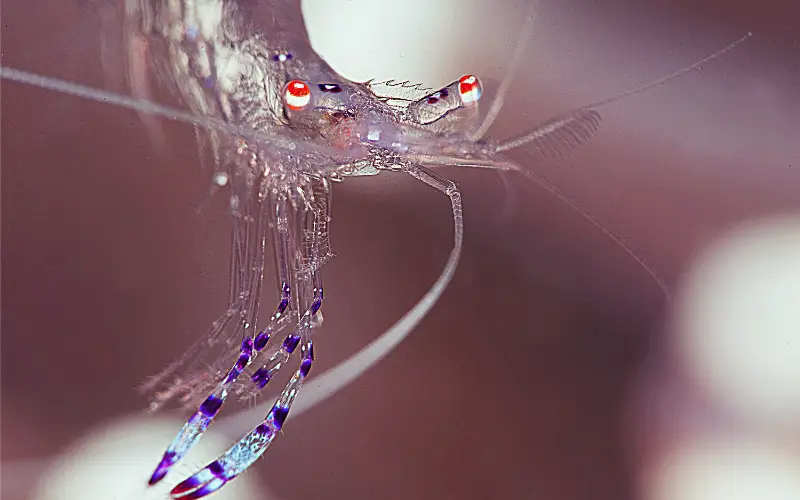Ever wondered why ghost shrimp are so darn cheap compared to other aquarium pets? As an experienced aquarium enthusiast, I’ve kept these fascinating little creatures for years, and I’m here to break down exactly why they won’t break your bank.
Quick Answer
Ghost shrimp are inexpensive primarily because they breed rapidly, have short lifespans (1-2 years), require minimal care, and serve dual purposes as both cleaners and feeder fish. Their abundant supply and simple maintenance needs keep prices low, typically ranging from 20-50 cents each.
5 Main Reasons Why Ghost Shrimp Are Budget-Friendly
1. They’re Baby-Making Machines
- Female ghost shrimp can produce 100+ eggs at once
- Breed year-round in good conditions
- Quick maturation rate
- Constant supply keeps market prices down
2. Low-Maintenance Pets
- Adapt to various water conditions
- No fancy equipment needed
- Eat almost anything (omnivorous)
- Hardy and disease-resistant
- Perfect for beginner aquarists
3. Nature’s Cleaning Crew
- Eat leftover food and debris
- Control algae growth
- Consume dead plant matter
- Help maintain tank ecosystem
- Reduce need for expensive cleaning products
4. Dual-Purpose Creatures
- Popular as feeder fish
- Used in both freshwater and marine tanks
- Serve as tank cleaners
- High demand keeps production steady
- Mass breeding for multiple markets
5. Short but Sweet Lives
- 1-2 year lifespan
- Small size (1.5 inches max)
- Regular replacement needed
- Continuous market demand
- Quick turnover rate
Ghost Shrimp Care Basics
What They Need:
- 10+ gallon tank
- Water temp: 70-80°F
- pH: 6.6-7.4
- Basic filter
- Some hiding spots
What They Eat:
- Fish flakes
- Algae wafers
- Dead plant matter
- Leftover fish food
- Detritus
Pro Tips for Keeping Ghost Shrimp
-
Tank Setup
- Add live plants for hiding
- Use dark substrate to see them better
- Provide gentle water flow
- Include some driftwood or rocks
-
Feeding Schedule
- Small amounts 2-3 times daily
- Don’t overfeed
- Remove uneaten food
-
Tank Mates
- Avoid aggressive fish
- Good with:
- Neon tetras
- Guppies
- Other peaceful fish
- Snails
Common Questions About Ghost Shrimp
Are they good for beginners?
Heck yeah! They’re super easy to care for and forgiving of minor mistakes. Perfect for starting your aquarium journey.
How many should I get?
Start with 5-10 shrimp in a 10-gallon tank, They’re social creatures but don’t need huge groups
Will they breed in my tank?
If conditions are right they’ll breed like crazy! Just make sure they have plenty of hiding spots and stable water parameters.
Final Thoughts
Look, I’ve kept loads of aquarium creatures over the years, and ghost shrimp are seriously underrated. Sure, they’re cheap, but that doesn’t mean they’re not awesome! They’re like the unsung heroes of the aquarium world – cleaning up messes, entertaining us with their antics, and not asking for much in return.
Whether you’re just starting out or looking to add some helpful cleaners to your tank, ghost shrimp are a fantastic choice. Their low price tag is just a bonus on top of all the benefits they bring to your aquarium ecosystem.
Remember: Sometimes the best things in life (or in this case, your aquarium) don’t need to cost a fortune! ✨

What is an Amano shrimp?
Scientifically known as Caridina multidentata (formerly Caridina japonica), the Amano shrimps common name is a reference to the late legendary Japanese aquascaper Takashi Amano. It was Amano who first introduced these shrimp into the aquarium hobby after realizing their impressive algae-eating capacities.
To this day, aquarists still mostly keep Amano shrimp to help them control algae levels in their tanks. They dont reproduce easily in our aquariums and they cant be bred for fancy colors like dwarf shrimp, but they make for useful little janitors and its fun to watch them go about their daily business.
Amano shrimp are naturally found in freshwater streams and rivers in Taiwan and parts of Japan. Theyre appreciated by aquarists not just for their algae-eating abilities, but also their friendly disposition and suitability for community aquariums. Amanos dont bother their tankmates, and because theyre larger than dwarf shrimp, theyre less likely to be eaten by them as well.
Amano shrimp vs ghost shrimp: Physical differences
Alright, so you got a shrimp. Its translucent and larger than a dwarf shrimp. Is it an Amano or a ghost? Dont worry, its actually easy to tell the difference once you know what to look for!
The main physical differences between Amano shrimp vs ghost shrimp are:
| Amano shrimp | Ghost shrimp | |
| Size | Up to 2.5″ | Up to 2″ |
| Back hump | No | Yes |
| Pattern | Dots and dashes on the sides | Red antenna bands, possibly fine sprinkling of dots |
